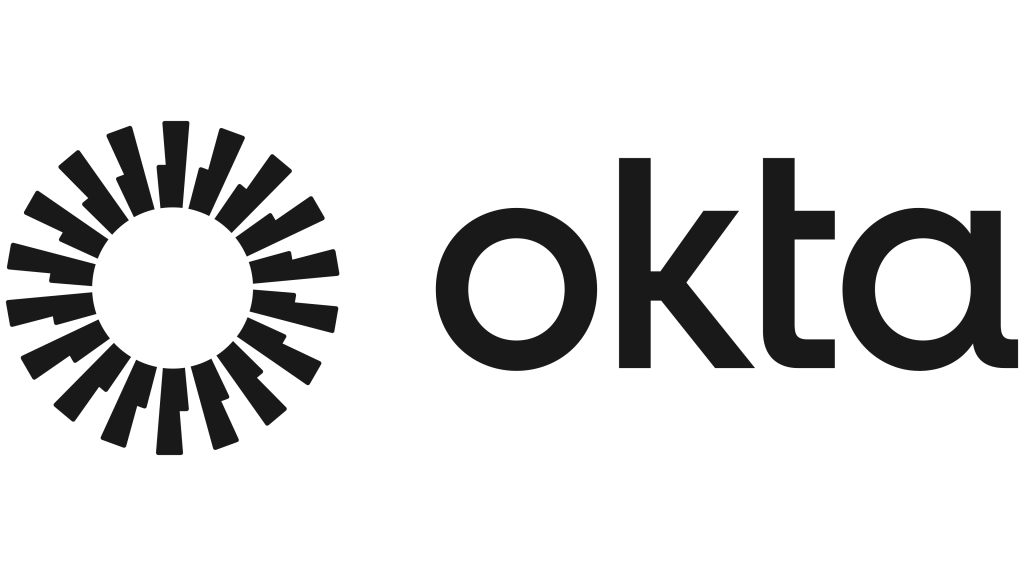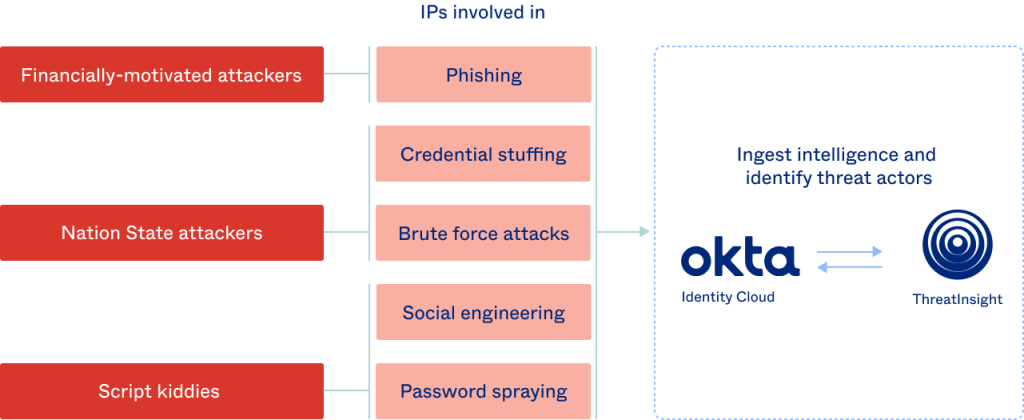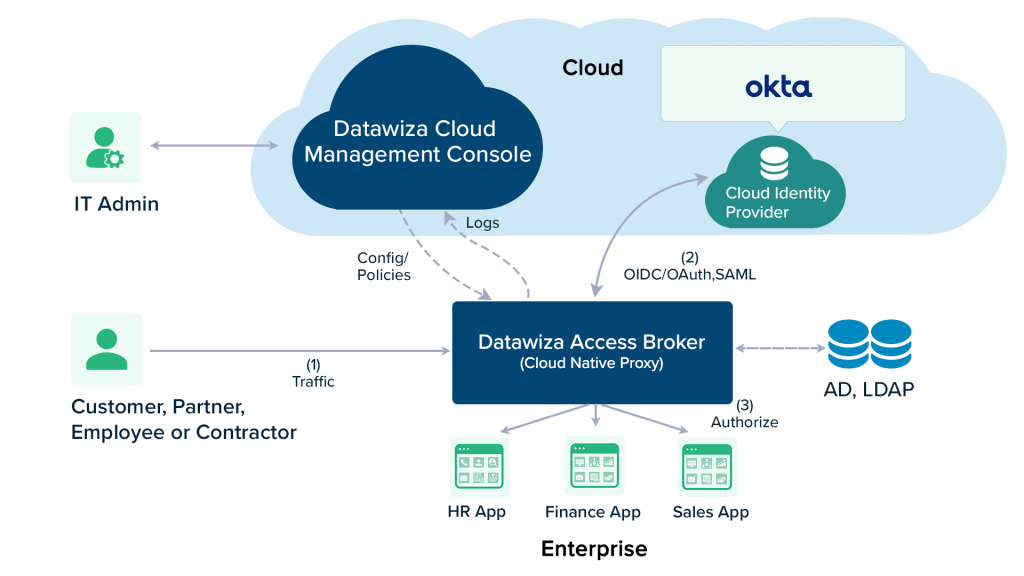What is Okta?

Okta is an identity and access management (IAM) platform that provides secure authentication, authorization, and single sign-on (SSO) capabilities for organizations. It enables businesses to manage user identities and access to various applications and resources in a centralized and secure manner.
Okta is a versatile IAM platform that addresses the challenges of managing identities and access in an increasingly complex and cloud-driven IT environment. It helps organizations enhance security, streamline user management, and improve user experiences across a wide range of use cases.
Top 10 use cases of Okta:
Here are the top 10 use cases for Okta:
- Single Sign-On (SSO): Okta allows users to access multiple applications with a single set of login credentials. Users sign in once and gain access to all authorized applications without needing to remember separate passwords.
- Multi-Factor Authentication (MFA): Okta supports MFA, adding an extra layer of security to user authentication. Users must provide multiple forms of verification, such as a password and a one-time code sent to their mobile device, to access applications.
- Identity and User Lifecycle Management: Organizations can use Okta to manage user identities and their lifecycle, including onboarding, offboarding, and role changes. This ensures that the right people have access to the right resources at the right time.
- Directory Integration: Okta can integrate with various directory services like Microsoft Active Directory and LDAP, enabling organizations to synchronize user data and access policies.
- Application Integration: Okta offers pre-built integrations with thousands of cloud and on-premises applications. This simplifies the process of adding and managing applications within the IAM platform.
- Adaptive Authentication: Okta uses contextual information to assess the risk associated with login attempts. It can enforce stricter authentication requirements when a login attempt is deemed risky, enhancing security.
- Access Policies and Role-Based Access Control (RBAC): Organizations can define access policies and use RBAC to control what resources users can access based on their roles and responsibilities within the organization.
- Password Management: Okta includes self-service password reset and management capabilities, reducing the burden on IT support teams and improving user experience.
- API Access Management: Okta can secure API endpoints, allowing organizations to control who can access their APIs and what actions they can perform. This is critical for securing microservices and APIs in modern application architectures.
- User Provisioning and De-Provisioning: Okta automates the provisioning and de-provisioning of user accounts in connected applications. When a user joins or leaves the organization, Okta can automatically update access rights.
- Customer Identity and Access Management (CIAM): Organizations can use Okta to provide secure access to their applications and services for customers, partners, and suppliers, enhancing user experiences while maintaining security.
- Identity Governance and Compliance: Okta provides tools to help organizations maintain compliance with regulatory requirements and industry standards by monitoring and auditing access to sensitive data and resources.
- Secure Remote Access: With the rise of remote work, Okta can ensure secure access to corporate resources for remote employees and partners, regardless of their location.
- Secure Browsing: Okta offers a secure browsing solution that allows organizations to isolate web applications and prevent browser-based attacks, such as phishing.
- Mobile Device Management (MDM): Okta can integrate with MDM solutions to ensure that mobile devices used by employees meet security and compliance standards before accessing corporate resources.
What are the feature of Okta?

Okta is an identity and access management (IAM) platform that offers a wide range of features and capabilities to help organizations manage user identities and secure access to applications and resources. Here are the key features of Okta, along with an overview of how it works and its architecture:
Key Features of Okta:
- Single Sign-On (SSO): Okta provides SSO capabilities, allowing users to sign in once and gain access to multiple applications without the need to remember separate passwords.
- Multi-Factor Authentication (MFA): Okta supports MFA, enhancing security by requiring users to provide multiple forms of authentication (e.g., password and one-time code) before granting access.
- User Lifecycle Management: Organizations can manage user identities throughout their lifecycle, including onboarding, offboarding, and role changes, ensuring proper access control.
- Directory Integration: Okta integrates with existing directory services, such as Microsoft Active Directory, LDAP, and others, to synchronize user data and access policies.
- Application Integration: Okta offers pre-built integrations with thousands of cloud and on-premises applications, simplifying application management within the IAM platform.
- Adaptive Authentication: Okta assesses the risk associated with login attempts using contextual information, enabling adaptive authentication to enforce stricter security measures when needed.
- Access Policies and Role-Based Access Control (RBAC): Organizations can define access policies and leverage RBAC to control resource access based on user roles and responsibilities.
- Password Management: Okta includes self-service password reset and management capabilities to reduce IT support overhead and enhance user experience.
- API Access Management: Okta secures API endpoints, allowing organizations to control who can access their APIs and what actions they can perform, essential for microservices and API security.
- User Provisioning and De-Provisioning: Okta automates the provisioning and de-provisioning of user accounts in connected applications, ensuring timely updates to access rights.
How Okta works and Architecture?

- User Registration and Authentication: Users register their accounts with Okta, which includes setting up authentication methods like passwords, MFA, or biometrics.
- Access to Applications: When users access an application, Okta’s SSO capabilities come into play. Users authenticate once with Okta, and Okta provides tokens to access authorized applications.
- Multi-Factor Authentication (MFA): Okta may require MFA based on security policies or contextual information, adding an extra layer of protection.
- User Lifecycle Management: Okta allows administrators to manage users’ lifecycles, including provisioning, de-provisioning, and access control.
- Directory Integration: Okta synchronizes user data and access policies with existing directories, ensuring consistency and ease of management.
- Adaptive Authentication: Okta evaluates risk factors like device type, location, and user behavior to dynamically adjust authentication requirements.
- Access Policies: Organizations define access policies that dictate who can access specific resources based on user roles, attributes, and contextual data.
- Identity Federation: Okta supports identity federation, allowing users to use their existing corporate credentials to access cloud-based applications and resources.
- Application Integration: Okta’s pre-built integrations streamline the addition of new applications and ensure consistent security across the application portfolio.
Okta’s architecture is designed for scalability and reliability:
- Identity Cloud: This is the core component of Okta’s architecture, providing identity management and authentication services.
- Okta Integration Network (OIN): The OIN includes pre-built integrations with thousands of applications, allowing organizations to easily connect and manage applications.
- APIs and SDKs: Okta offers APIs and SDKs for developers to integrate Okta services into custom applications and workflows.
- Identity and Access Policies: Administrators define identity and access policies within the Okta platform to enforce security and compliance rules.
- User Directory: Okta can integrate with existing user directories, acting as a bridge between on-premises and cloud-based identity management.
- User Authentication: Okta supports various authentication methods, including passwords, MFA, biometrics, and social identity providers.
- Security and Compliance: Okta’s architecture includes robust security measures to protect user data and ensure compliance with industry standards.
Okta is a versatile IAM platform that helps organizations enhance security, streamline user management, and improve user experiences across a wide range of use cases. Its architecture is designed to provide a secure and scalable foundation for identity and access management.
How to Install Okta?
There are two ways to install Okta:
- Using the Okta Cloud Edition: This is the easiest way to install Okta and is recommended for most users.
- Using the Okta On-Premises Edition: This is a more complex process but may be necessary if you have specific requirements.
Using the Okta Cloud Edition:
- Go to the Okta sign-up page and create a free account.
- Once you have created an account, you will be able to access the Okta Admin Console.
- In the Okta Admin Console, click on the Settings tab.
- Under the Domains section, click on the Add Domain button.
- Enter a name for your domain and click on the Add Domain button.
- Once your domain has been added, you will need to verify it. To verify your domain, follow the instructions on the screen.
- Once your domain has been verified, you will be able to start adding users and applications to your Okta account.
Using the Okta On-Premises Edition:
- Download the Okta On-Premises installer from the Okta website.
- Run the installer and follow the instructions on the screen.
- Once the installation is complete, you will be able to access the Okta Admin Console.
- In the Okta Admin Console, click on the Settings tab.
- Under the Domains section, click on the Add Domain button.
- Enter a name for your domain and click on the Add Domain button.
- Once your domain has been added, you will need to verify it. To verify your domain, follow the instructions on the screen.
- Once your domain has been verified, you will be able to start adding users and applications to your Okta account.
Getting started with Okta:
Once you have installed Okta, you can start using it to manage your users and applications. For more information on how to use Okta, please refer to the Okta documentation.
Some of the basic things you can do with Okta:
- Add and manage users: Okta allows you to add and manage users in a centralized location. You can also use Okta to assign users to applications and groups.
- Add and manage applications: Okta allows you to add and manage applications in a centralized location. You can also use Okta to configure single sign-on (SSO) for your applications.
- Implement security policies: Okta provides a variety of security policies that you can use to protect your users and applications. For example, you can use Okta to implement multi-factor authentication (MFA) and password policies.
- Monitor your environment: Okta allows you to monitor your environment for any suspicious activity. You can view alerts for any suspicious activity in the Okta Admin Console.
Okta is a powerful identity and access management (IAM) platform that can help you to protect your users and applications from a variety of threats.
Basic Tutorials of Okta: Getting Started

The following steps are the basic tutorial of Okta:
1. Create an Okta account:
- Go to the Okta website and click Sign Up.
- Enter your email address and create a password.
- Click Create Account.
- You will receive an email with a confirmation link. Click the link to confirm your account.
2. Add your users:
Once you have created an Okta account, you can start adding your users.
To add a user:
- Click Users in the left-hand menu.
- Click Add User.
- Enter the user’s information and click Create User.
3. Create an application:
Once you have added your users, you can start creating applications. Applications are the resources that your users will access using Okta.
To create an application:
- Click Applications in the left-hand menu.
- Click Add Application.
- Select the type of application that you want to create and click Next.
- Enter the application’s information and click Create.
4. Assign users to applications:
Once you have created an application, you can start assigning users to it.
To assign a user to an application:
- Click Applications in the left-hand menu.
- Click the name of the application that you want to assign users to.
- Click Assignments.
- Click Assign Users.
- Select the users that you want to assign to the application and click Assign.
5. Configure single sign-on (SSO):
Okta supports a variety of SSO protocols, such as SAML, OAuth, and OpenID Connect. You can configure SSO for your applications so that your users can log in to them using their Okta credentials.
To configure SSO for an application:
- Click Applications in the left-hand menu.
- Click the name of the application that you want to configure SSO for.
- Click Sign On.
- Select the SSO protocol that you want to use and click Next.
- Enter the required information and click Save.
6. Test your SSO configuration:
Once you have configured SSO for an application, you should test it to make sure that it is working properly.
To test your SSO configuration:
- Open a web browser and go to the application that you configured SSO for.
- You should be redirected to Okta for the login step.
- Enter your Okta credentials and log in.
- You should be redirected back to the application and logged in.
Additional tips:
- You can use Okta’s Universal Directory to manage your users’ identities across multiple applications.
- You can use Okta’s Workflows feature to automate tasks such as user onboarding and provisioning.
- You can use Okta’s MFA feature to add an extra layer of security to your applications.
- Why Can’t I Make Create A New Folder on External Drive on Mac – Solved - April 28, 2024
- Tips on How to Become a DevOps Engineer - April 28, 2024
- Computer Programming Education Requirements – What You Need to Know - April 28, 2024

